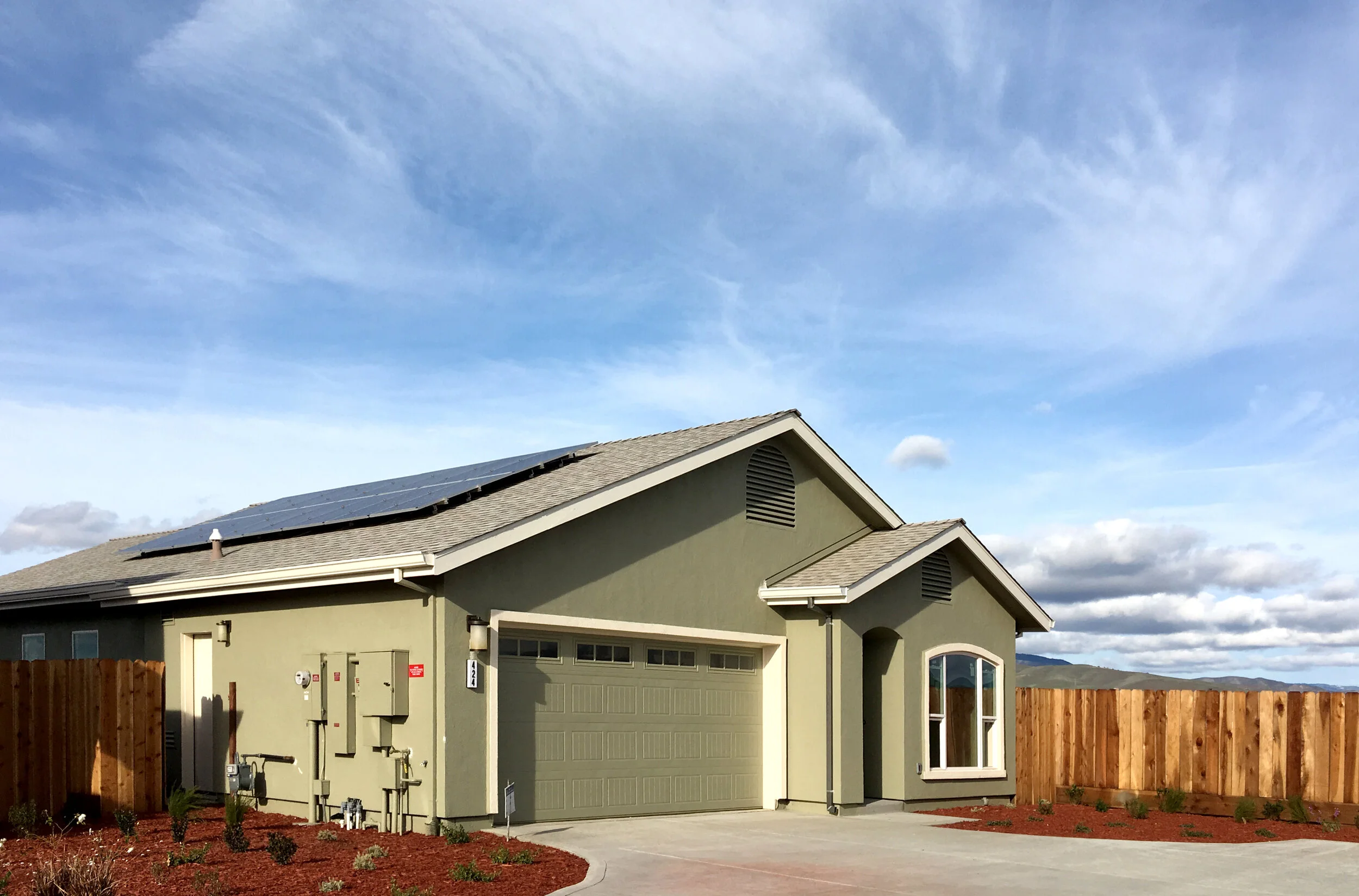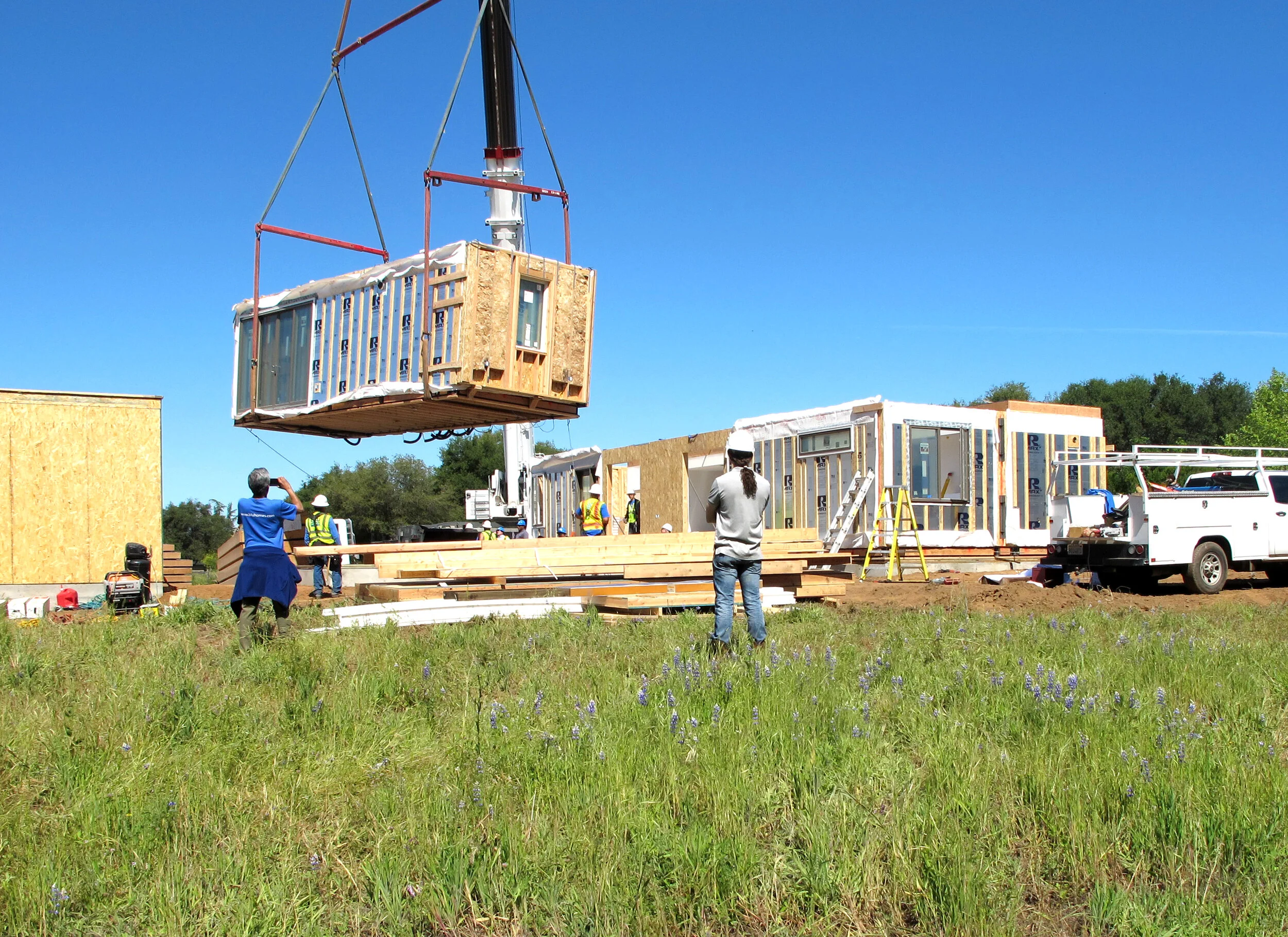Zero Net Energy Production Builder Demonstration
Client: PG&E
Project Dates: 2015-2019
Project Team: Resource Refocus LLC, Design AVEnues, BIRAenergy, and Frontier Energy
project summary
Pacific Gas and Electric Company (PG&E) implemented a Zero Net Energy (ZNE) Production Builder Demonstration that supported six builders in California in designing and monitoring a ZNE house. Each builder received technical support from start to finish to upgrade one of their existing prototypes to ZNE while preserving their look and feel. The ultimate goal was to achieve a ZNE home that the builder could replicate to begin to build ZNE homes at scale. For each builder, the design consultants recommended energy efficiency measures for the builder's standard design based on performance modeling and substantial past experience with ZNE and energy-efficient homes. As part of this offering, PG&E reimbursed up to $15,000 in incremental cost of the energy efficiency measures; experience shows that the incremental costs will drop in subsequent projects. Finally, the monitoring consultants tracked the end-use energy consumption of the completed home for a year after occupancy to determine whether the ZNE home is performing as designed and to diagnose any operational issues.
The six builders who participated in the Demonstration include:
Blu Homes
Community Housing Improvement Systems and Planning Association, Inc. (CHISPA)
De Young Properties
Habitat for Humanity of San Joaquin County, Inc. (SJC Habitat)
Meritage Homes
Pulte Group
Monitoring reports
The Monitoring Reports’ primary goals are to evaluate how well the test homes achieved the zero net energy design goals over the course of the first year of operation for each house. The homes were occupied for the entire monitoring period, and all loads are those resulting from the inhabitants’ activities without any outside direction from the evaluation team.
The actual site energy use for each property was compared to two models: one using the Typical Meteorological Year (TMY) and the other using the Actual Meteorological Year (AMY) for the respective locations closest to each project.
The CHISPA ZNE test house is a single story, 1,151 square foot single family home in Greenfield, CA. Total site energy use was approximately 56% more than modeled for both AMY and TMY. Actual solar production was 13% (TMY) and 5% (AMY) greater than modeled.
The Blu Homes ZNE Demonstration Home is an all-electric, 1,877 square foot home in Loomis, CA. The total monitored site energy use was 23% (TMY) and 29% (AMY) more than the modeled projections. Actual solar production was 6% greater than the TMY modeled solar production, but 10% less than the AMY modeled projections.
The De Young Properties ZNE test house is a single story 2,019 square foot, single family home located in Clovis, CA. The total site energy use was 16% (TMY) and 44% (AMY) more than modeled projections. Actual solar production was 30% (TMY) and 38% (AMY) more than modeled projections.
The Meritage ZNE test house is a two story 2,047 square foot single family home located in Hayward, CA. The total site energy use was 4% (TMY) less and 11% (AMY) more than modeled projections.
The PulteGroup ZNE test house is a two story 2,359 square foot single family home located in Brentwood, CA. The total site energy use was 31% (TMY) and 39% (AMY) more than modeled projections. Actual solar production was 0.5% (TMY) greater and 8.1% (AMY) less than modeled projections.
lessons learned
Some unnecessary equipment, such as gas lines and baffles for low eave vents, was installed in some of the homes because the workers were used to the installations required for typical, non-ZNE homes.
Seamless communication between different aspects of construction (framing, electrical, etc.) creates a very successful and efficient building and construction process.
Optimizing a package of measures and their implementation to meet ZNE is an iterative process.
Resource Refocus’ Role
Resource Refocus led demonstration development, oversight, coordination, and energy modeling for the Building Demonstration, and led the final report writing for the case studies. Resource Refocus managed, but did not provide lead authorship, for the monitoring reports.











